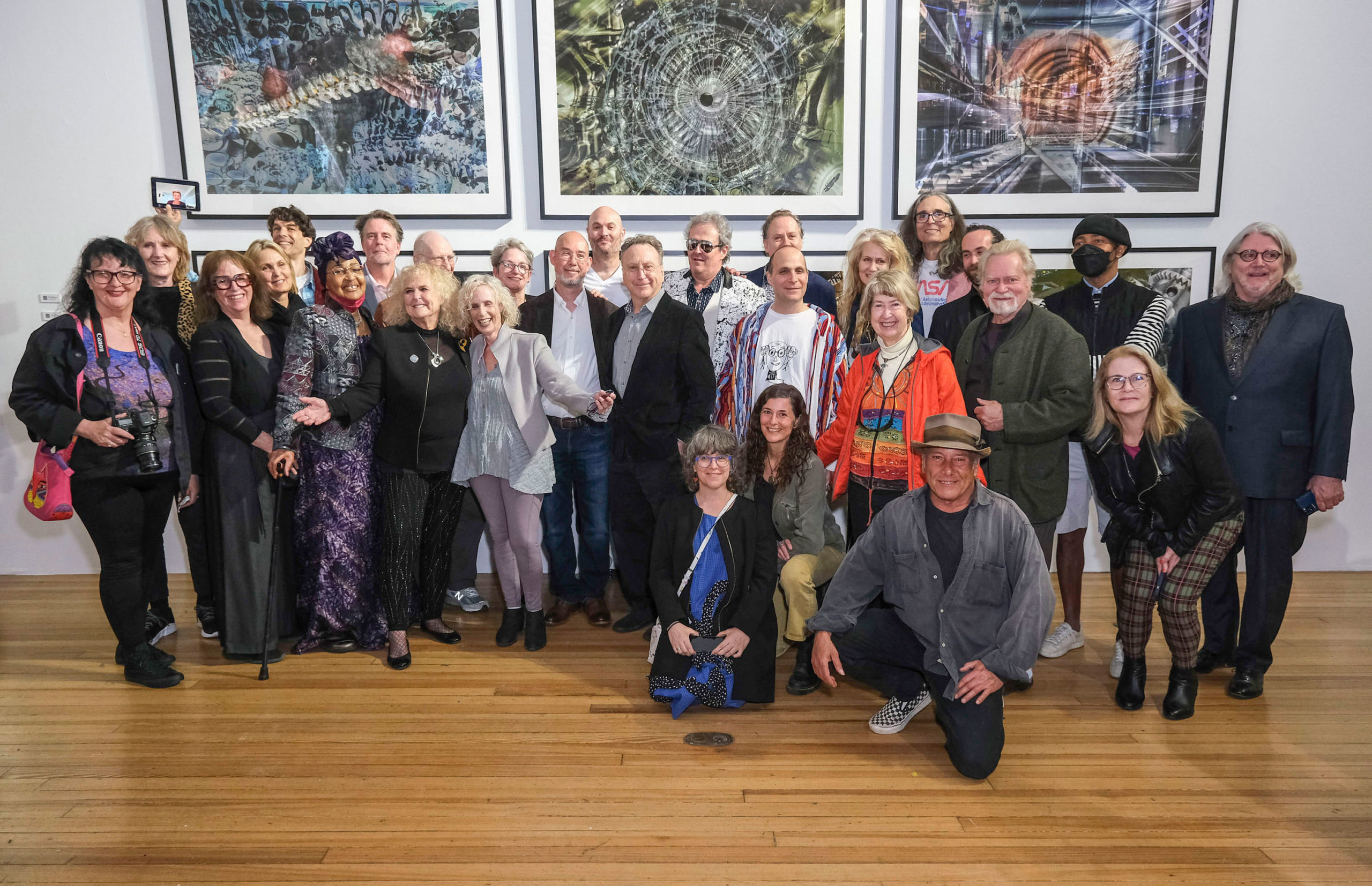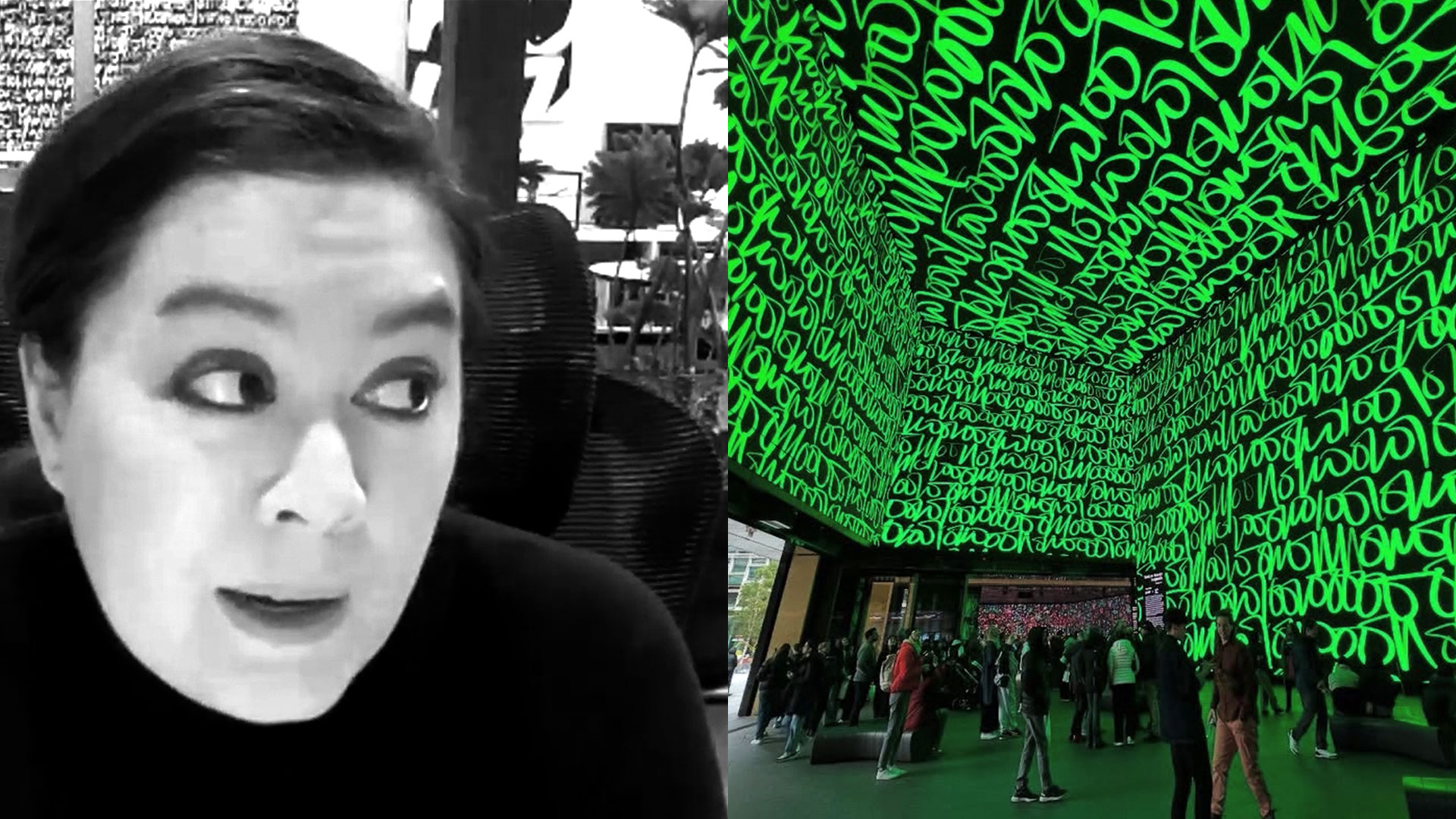techspressionism
/tek-spresh-uh-niz-uh m/
- An artistic approach in which technology is utilized as a means to express emotional experience.
- A 21st-century artistic and social movement.
Techspressionism is a term coined by artist Colin Goldberg in 2011 to describe his fusion of digital tools and Expressionist intent. It was first referred to as a movement by WIRED in 2014.
In 2020, Goldberg initiated the formation of an artist group around the idea with fellow artists Oz Van Rosen, Steve Miller, and Patrick Lichty, as well as art historian Helen A. Harrison, the longtime Director of the Pollock-Krasner House and Study Center (1990-2024).
Techspressionism has since grown into an international community of artists working with technology, comprised of over 350 artists from more than 45 countries, with 80,000+ Instagram posts using the hashtag.

Techspressionism: Digital and Beyond opening reception at Southampton Arts Center, April 23, 2022.
In 2022, Goldberg curated the debut exhibition, Techspressionism: Digital & Beyond, at Southampton Arts Center, featuring 90+ artists from 20+ countries. Since then, the group has held museum exhibitions in Brooklyn and Uzbekistan.
The community meets monthly in virtual artist salons on Zoom, which are open to artists worldwide. The 100th salon was held in November 2025. Visit techspressionism.com for interviews, roundtables, and global exhibition archives.

Techspressionism: Digital and Beyond opening reception at Southampton Arts Center, April 23, 2022.
ROUNDTABLE DISCUSSIONS
ARTIST INTERVIEW
Sasha Stiles interviewed by Colin Goldberg
Sasha Stiles’ generative work “A LIVING POEM” is on display at MoMA thru Spring 2026; she is a Kalmyk-American poet and language artist whose award-winning work bridges tradition and innovation through hybrid poetics, generative imagination, and collaborative intelligence.
“Each age finds its own technique”.
– Jackson Pollock
Commentary by Helen A. Harrison
Former Director, Pollock-Krasner House and Study Center, 1990-2024
In 1928, ruminating on the rapid pace and profound nature of change in the twentieth century, the French poet and philosopher Paul Valéry wrote: “We must expect great innovations to transform the entire technique of the arts, thereby affecting artistic invention itself and perhaps even bringing about an amazing change in our very notion of art.” This prediction so impressed the cultural critic Walter Benjamin that he used it as the epigraph of his famous 1935 essay, “The Work of Art in the Age of its Technological Reproducibility” (as it was originally titled). These writers and others were pondering the same issues that face the artists who now, nearly a century later, self-identify as Techspressionists.
Thanks to digital technologies and the Internet, works of art have become, in Valéry’s formulation, ubiquitous; as he foresaw, “We shall only have to summon them and there they will be.” This level of accessibility requires us to adopt and accept new attitudes toward creative expression. As Benjamin observed, the debate regarding the artistic validity of new media, begun with photography and cinema in the late nineteenth century, centers on the so-called aura of the singular work of art. And the aura of uniqueness remains powerful. Yet a digitally-generated artwork is not a reproduction in the conventional sense—that is, a copy of something else—though it can be, and often is, reproduced in multiples that are indistinguishable one from another.
Hand-made versus mechanical. One-off versus duplication. Such binaries ultimately resolve in light of the works of art themselves. By whatever technique it’s created, Techspressionist imagery generates its own aura, deriving its authenticity from the artist’s intention. Expression is paramount; technology is merely the delivery system. Jackson Pollock faced a similar concern. Frustrated by the focus on his materials and methods rather than the content of his paintings, he insisted, “It doesn’t make much difference how the paint is put on as long as something is being said. Technique is just a means of arriving at a statement.”
